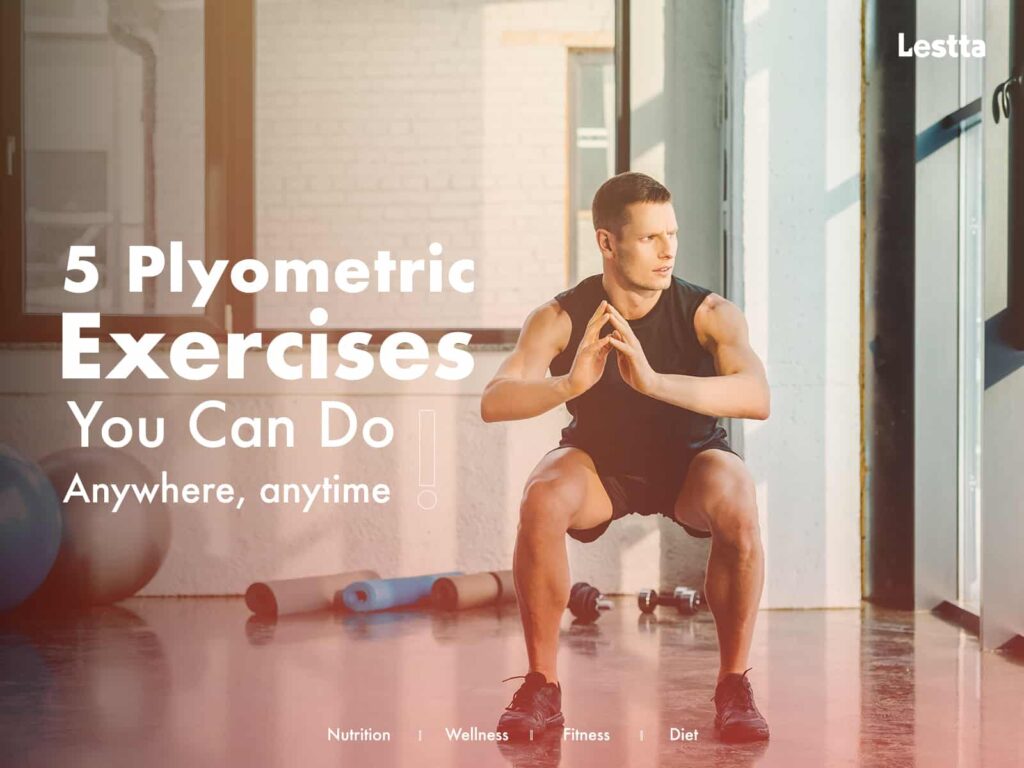
Plyometric exercises are dynamic movements that involve quick and explosive muscle contractions. They are an excellent way to increase power, speed, and agility, making them popular among athletes and fitness enthusiasts alike. In this article, we will explore five effective plyometric exercises that can be incorporated into your routine.
1. Jump Squats
Jump squats are a fantastic full-body plyometric exercise that targets your lower body muscles, particularly your quadriceps, hamstrings, and glutes. To perform this exercise, start in a squat position with your feet shoulder-width apart. Lower your body into a squat, keeping your knees behind your toes, and then explode upward into a jump, extending your arms overhead.
Land softly back into the squat position and repeat. Aim for 10 to 12 reps per set, gradually increasing the intensity as you become more comfortable. Jump squats are a great way to improve lower body strength, explosiveness, and overall athletic performance.
2. Burpees
Burpees are a challenging yet highly effective plyometric exercise that engages multiple muscle groups and elevates your heart rate. They are an excellent choice for boosting cardiovascular endurance while also working your arms, chest, core, and legs. To perform a burpee, start in a standing position, then drop into a squat position with your hands on the ground.
Kick your feet back into a plank position, perform a push-up, and then quickly bring your feet back to the squat position. From there, explosively jump upward with your arms extended overhead. Repeat this sequence for 10 to 15 repetitions, and feel the burn as you engage your entire body.
3. Box Jumps
Box jumps are a classic plyometric exercise that helps build explosive power in your lower body, particularly in your calves, quadriceps, and glutes. You’ll need a sturdy platform or box for this exercise. Begin by standing in front of the box with your feet shoulder-width apart. Bend your knees and swing your arms back, then explode upward, jumping onto the box and landing softly with your knees slightly bent.
Step down carefully and repeat for a desired number of reps. Start with a lower box height and gradually increase it as you gain strength and confidence. Box jumps are an excellent way to challenge your vertical jump and improve lower body strength.
4. Skater Jumps
Skater jumps are a dynamic plyometric exercise that mimics the side-to-side movement of a speed skater. They target your leg muscles, including the quadriceps, hamstrings, and glutes, while also improving balance and coordination. To perform skater jumps, start in a semi-squat position, with one leg slightly behind the other.
Push off with your back leg and jump laterally to the opposite side, landing softly on the other leg. Repeat this side-to-side movement for 10 to 12 reps on each leg. Skater jumps are an excellent addition to any plyometric routine, helping you develop agility and lower body stability.
5. Tuck Jumps
Tuck jumps are an advanced plyometric exercise that challenges your explosive power and core strength. Begin by standing with your feet hip-width apart. Jump up explosively, bringing your knees toward your chest and tucking them in mid-air. Extend your legs back down before landing softly and immediately repeating the movement.
Start with a lower number of repetitions, such as 6 to 8, and gradually increase as your strength and technique improve. Tuck jumps provide a great workout for your legs, core, and cardiovascular system, making them an ideal exercise to enhance overall athleticism.
Conclusion
Incorporating plyometric exercises into your fitness routine can significantly enhance your strength, power, and agility. The five plyometric exercises mentioned above – jump squats, burpees, box jumps, skater jumps, and tuck jumps – are excellent choices that can be done anywhere, anytime.









